-
 Bitcoin
Bitcoin $116400
-0.36% -
 Ethereum
Ethereum $4033
3.40% -
 XRP
XRP $3.302
-1.26% -
 Tether USDt
Tether USDt $1.000
-0.02% -
 BNB
BNB $796.1
1.67% -
 Solana
Solana $177.8
1.89% -
 USDC
USDC $0.9999
0.00% -
 Dogecoin
Dogecoin $0.2314
4.09% -
 TRON
TRON $0.3381
0.14% -
 Cardano
Cardano $0.7989
1.22% -
 Stellar
Stellar $0.4496
-1.84% -
 Chainlink
Chainlink $20.42
9.42% -
 Hyperliquid
Hyperliquid $41.17
0.88% -
 Sui
Sui $3.914
3.77% -
 Bitcoin Cash
Bitcoin Cash $584.7
1.52% -
 Hedera
Hedera $0.2632
-0.54% -
 Avalanche
Avalanche $24.09
3.40% -
 Ethena USDe
Ethena USDe $1.001
-0.02% -
 Litecoin
Litecoin $123.2
1.33% -
 Toncoin
Toncoin $3.318
-0.04% -
 UNUS SED LEO
UNUS SED LEO $8.984
-0.05% -
 Shiba Inu
Shiba Inu $0.00001323
2.85% -
 Uniswap
Uniswap $10.90
4.41% -
 Polkadot
Polkadot $3.999
3.34% -
 Dai
Dai $1.000
0.01% -
 Cronos
Cronos $0.1630
9.64% -
 Bitget Token
Bitget Token $4.484
0.82% -
 Monero
Monero $272.4
2.44% -
 Pepe
Pepe $0.00001173
6.03% -
 Aave
Aave $290.8
2.88%
Which two moving averages are used for the golden cross? Short-term cycle selection
The golden cross, a bullish signal in crypto trading, occurs when the 50-day moving average crosses above the 200-day moving average, prompting long positions.
Jun 03, 2025 at 09:07 am
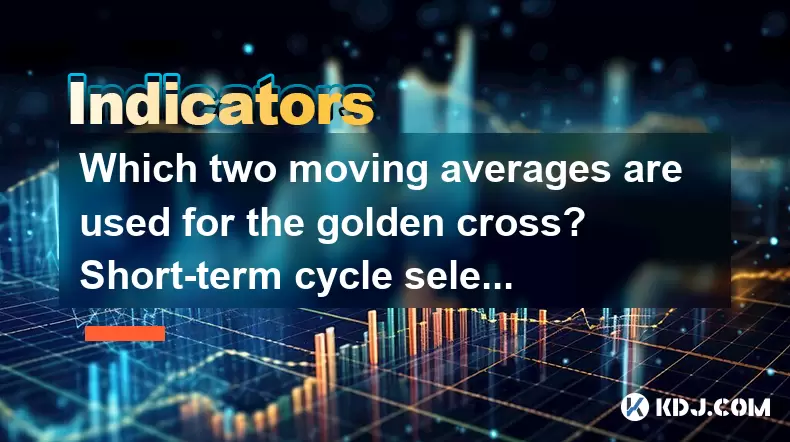
The golden cross is a popular technical analysis indicator used by traders and investors in the cryptocurrency market to identify potential bullish trends. This indicator involves the crossing of two moving averages, typically a short-term moving average and a long-term moving average. In this article, we will delve into the specifics of which two moving averages are used for the golden cross and discuss the short-term cycle selection process.
Understanding the Golden Cross
The golden cross occurs when a short-term moving average crosses above a long-term moving average, signaling a potential shift from a bearish to a bullish market trend. This event is considered a strong buy signal by many traders and investors. The most commonly used moving averages for this indicator are the 50-day moving average (short-term) and the 200-day moving average (long-term).
The 50-Day Moving Average
The 50-day moving average is a short-term moving average that smooths out price data over a 50-day period. It is widely used in the cryptocurrency market to assess the short-term trend of a particular asset. When the price of a cryptocurrency moves above its 50-day moving average, it is often interpreted as a sign of short-term bullish momentum.
The 200-Day Moving Average
The 200-day moving average is a long-term moving average that provides a broader view of the market trend over a 200-day period. This moving average is considered a significant benchmark for determining the overall direction of a cryptocurrency's price. When the price of a cryptocurrency moves above its 200-day moving average, it is often seen as an indication of a long-term bullish trend.
The Golden Cross Event
A golden cross event is confirmed when the 50-day moving average crosses above the 200-day moving average. This crossover is considered a strong bullish signal and often prompts traders and investors to enter long positions. The golden cross can be identified on a price chart by observing the intersection of these two moving averages.
Short-Term Cycle Selection
Selecting the appropriate short-term cycle for the golden cross is crucial for effective trading and investment decisions. While the 50-day moving average is the most commonly used short-term moving average, traders may choose other short-term cycles based on their trading style and market conditions.
- 20-day moving average: Some traders prefer to use a 20-day moving average as their short-term cycle. This shorter timeframe can provide quicker signals but may also result in more false positives.
- 30-day moving average: Another option is the 30-day moving average, which offers a balance between responsiveness and reliability.
- 100-day moving average: For those seeking a longer short-term cycle, the 100-day moving average can be used. This moving average provides a more stable signal but may lag behind rapid market movements.
Implementing the Golden Cross Strategy
To implement the golden cross strategy in the cryptocurrency market, traders and investors need to follow a systematic approach. Here is a step-by-step guide on how to use the golden cross indicator:
- Select the cryptocurrency: Choose the cryptocurrency you wish to analyze. Popular options include Bitcoin (BTC), Ethereum (ETH), and other major altcoins.
- Choose the time frame: Determine the time frame for your analysis. For the golden cross, most traders use daily charts.
- Plot the moving averages: On your chosen chart, plot the 50-day moving average and the 200-day moving average.
- Monitor for the golden cross: Watch for the 50-day moving average to cross above the 200-day moving average. This event signals a potential bullish trend.
- Confirm the signal: Before entering a trade, confirm the golden cross signal by checking other technical indicators and market conditions.
- Enter the trade: Once the golden cross is confirmed, consider entering a long position in the cryptocurrency.
- Set stop-loss and take-profit levels: To manage risk, set appropriate stop-loss and take-profit levels based on your trading strategy and risk tolerance.
- Monitor the trade: Continuously monitor the trade and be prepared to exit if market conditions change or if your stop-loss level is reached.
Practical Example of the Golden Cross
To illustrate the golden cross in action, let's consider a hypothetical scenario involving Bitcoin (BTC). Suppose the 50-day moving average of Bitcoin is currently at $30,000, and the 200-day moving average is at $28,000. If the price of Bitcoin rises above $30,000 and the 50-day moving average subsequently crosses above the 200-day moving average, a golden cross event would be confirmed. This signal would suggest a potential bullish trend for Bitcoin, prompting traders to consider entering long positions.
Variations of the Golden Cross
While the 50-day and 200-day moving averages are the most commonly used for the golden cross, there are variations that traders may employ based on their specific needs and preferences. Some traders may use different combinations of moving averages to suit their trading style and market conditions.
- 20-day and 50-day moving averages: This combination offers a more sensitive signal, suitable for short-term traders.
- 100-day and 200-day moving averages: This combination provides a more conservative signal, ideal for long-term investors.
Using the Golden Cross in Different Market Conditions
The effectiveness of the golden cross can vary depending on market conditions. In bullish markets, the golden cross is often a reliable indicator of continued upward momentum. However, in sideways or choppy markets, the golden cross may generate false signals, leading to potential losses. Therefore, it is essential to consider the broader market context when using the golden cross as part of your trading strategy.
Combining the Golden Cross with Other Indicators
To increase the reliability of the golden cross, traders often combine it with other technical indicators. Some commonly used indicators that complement the golden cross include:
- Relative Strength Index (RSI): The RSI can help confirm overbought or oversold conditions, adding an extra layer of analysis to the golden cross signal.
- Moving Average Convergence Divergence (MACD): The MACD can provide additional momentum signals that align with the golden cross, enhancing its reliability.
- Volume: High trading volume during a golden cross event can validate the strength of the bullish signal.
Frequently Asked Questions
Q1: Can the golden cross be used for short-term trading?
A1: While the golden cross is typically used for identifying long-term bullish trends, some traders may adapt it for short-term trading by using shorter moving averages, such as the 20-day and 50-day moving averages. However, short-term traders should be aware that these signals may be more prone to false positives and require additional confirmation from other indicators.
Q2: Is the golden cross effective in all market conditions?
A2: The effectiveness of the golden cross can vary depending on market conditions. It tends to be more reliable in strong bullish trends but may generate false signals in sideways or choppy markets. Traders should consider the broader market context and use additional indicators to validate the golden cross signal.
Q3: How can I avoid false signals when using the golden cross?
A3: To avoid false signals, traders should use the golden cross in conjunction with other technical indicators, such as the RSI, MACD, and volume analysis. Additionally, confirming the golden cross signal with fundamental analysis and market sentiment can help reduce the likelihood of false positives.
Q4: Can the golden cross be used for altcoins other than Bitcoin and Ethereum?
A4: Yes, the golden cross can be applied to any cryptocurrency, including altcoins. However, traders should be aware that less liquid altcoins may exhibit more volatility and false signals. It is crucial to adjust the moving average periods and use additional confirmation methods when applying the golden cross to altcoins.
Disclaimer:info@kdj.com
The information provided is not trading advice. kdj.com does not assume any responsibility for any investments made based on the information provided in this article. Cryptocurrencies are highly volatile and it is highly recommended that you invest with caution after thorough research!
If you believe that the content used on this website infringes your copyright, please contact us immediately (info@kdj.com) and we will delete it promptly.
- Shiba Inu (SHIB) in the Crypto Landscape: Community, Trends, and Future Outlook
- 2025-08-09 20:30:12
- Lasers in Modern Warfare: Iron Beam and the Future of Defense
- 2025-08-09 20:30:12
- Maxi Doge Presale: The Meme Coin That's Pumping Iron and Prices!
- 2025-08-09 19:10:11
- Rare Coin Warning: Don't Get Fooled by That 1p Coin!
- 2025-08-09 18:50:12
- Cardano, Unilabs, and Tron Price: Decoding the Latest Crypto Buzz
- 2025-08-09 18:30:12
- Aerodrome Finance: Price Targets and the Bullish Channel - What's Next?
- 2025-08-09 18:50:12
Related knowledge

What does it mean when the Triple Moving Average (TRIX) turns downward but the price doesn't fall?
Aug 09,2025 at 12:42pm
Understanding the Triple Moving Average (TRIX) IndicatorThe Triple Moving Average, commonly known as TRIX, is a momentum oscillator designed to filter...

What does it mean when the Williams' oscillator repeatedly hits bottoms but fails to rebound?
Aug 09,2025 at 09:28am
Understanding the Williams %R OscillatorThe Williams %R oscillator, developed by Larry Williams, is a momentum indicator used in technical analysis to...
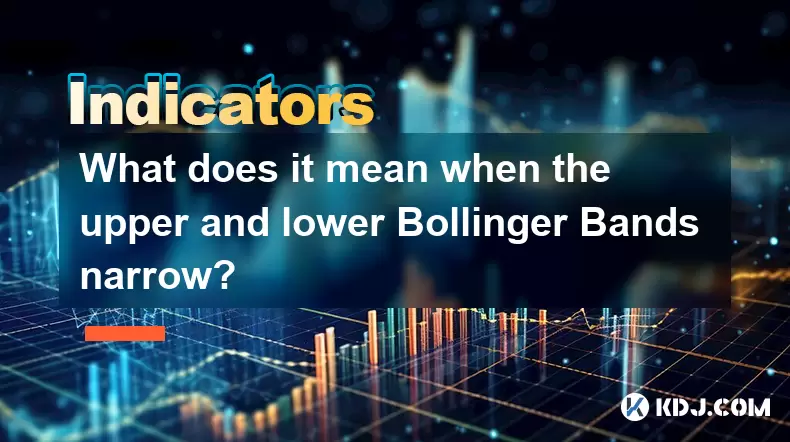
What does it mean when the upper and lower Bollinger Bands narrow?
Aug 09,2025 at 03:00pm
Understanding Bollinger Bands in Cryptocurrency TradingBollinger Bands are a widely used technical analysis tool in the cryptocurrency market, develop...
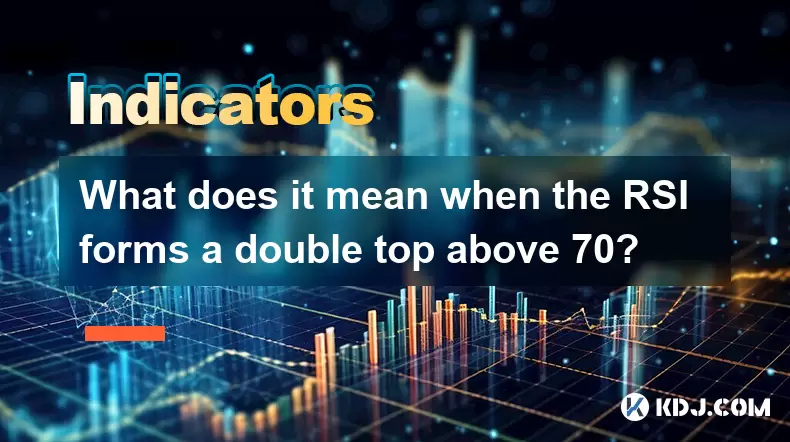
What does it mean when the RSI forms a double top above 70?
Aug 09,2025 at 05:50pm
Understanding the RSI and Overbought ConditionsThe Relative Strength Index (RSI) is a momentum oscillator that measures the speed and change of price ...
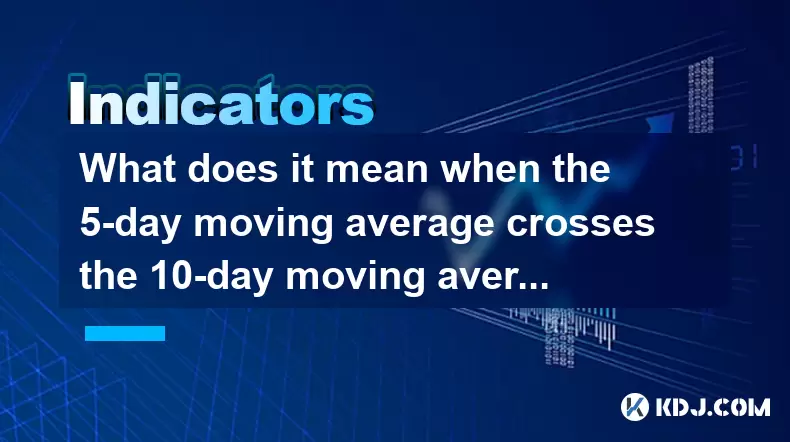
What does it mean when the 5-day moving average crosses the 10-day moving average but the 20-day moving average remains upward?
Aug 09,2025 at 03:35pm
Understanding Moving Averages in Cryptocurrency TradingMoving averages are foundational tools in technical analysis, especially within the cryptocurre...
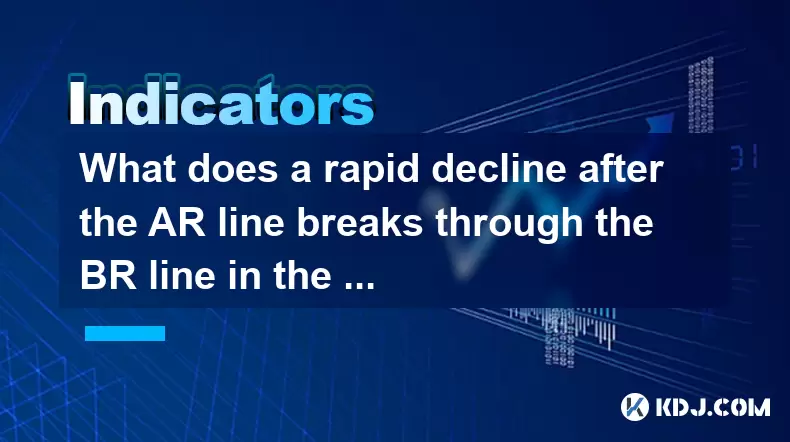
What does a rapid decline after the AR line breaks through the BR line in the ARBR indicator indicate?
Aug 09,2025 at 04:42pm
Understanding the ARBR Indicator ComponentsThe ARBR indicator is a technical analysis tool that combines two oscillators: the AR (Amplitude Ratio) and...

What does it mean when the Triple Moving Average (TRIX) turns downward but the price doesn't fall?
Aug 09,2025 at 12:42pm
Understanding the Triple Moving Average (TRIX) IndicatorThe Triple Moving Average, commonly known as TRIX, is a momentum oscillator designed to filter...

What does it mean when the Williams' oscillator repeatedly hits bottoms but fails to rebound?
Aug 09,2025 at 09:28am
Understanding the Williams %R OscillatorThe Williams %R oscillator, developed by Larry Williams, is a momentum indicator used in technical analysis to...

What does it mean when the upper and lower Bollinger Bands narrow?
Aug 09,2025 at 03:00pm
Understanding Bollinger Bands in Cryptocurrency TradingBollinger Bands are a widely used technical analysis tool in the cryptocurrency market, develop...

What does it mean when the RSI forms a double top above 70?
Aug 09,2025 at 05:50pm
Understanding the RSI and Overbought ConditionsThe Relative Strength Index (RSI) is a momentum oscillator that measures the speed and change of price ...

What does it mean when the 5-day moving average crosses the 10-day moving average but the 20-day moving average remains upward?
Aug 09,2025 at 03:35pm
Understanding Moving Averages in Cryptocurrency TradingMoving averages are foundational tools in technical analysis, especially within the cryptocurre...

What does a rapid decline after the AR line breaks through the BR line in the ARBR indicator indicate?
Aug 09,2025 at 04:42pm
Understanding the ARBR Indicator ComponentsThe ARBR indicator is a technical analysis tool that combines two oscillators: the AR (Amplitude Ratio) and...
See all articles

























































































